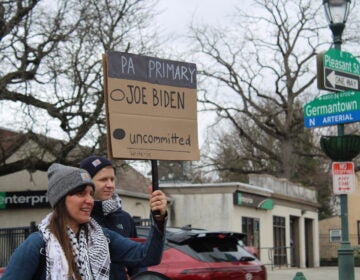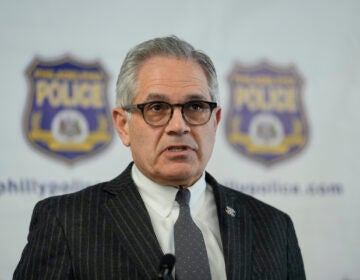Manayunk bridge awaits major rail to trail transformation
The clock is ticking on plans to create a biking and walking trail across the iconic Manayunk railroad bridge, which would connect parks on both sides of the Schuylkill River.
Officials said this week they were close to choosing design, engineering and landscape architecture teams that will use a construction grant awarded in January for the project.
“The front end of the project is funded, the back end of the project is funded, it’s the middle part we’re working on,” said Byron Comati, director of strategic planning and analysis for SEPTA, which has owned the bridge since the mid-1970s.
With a $1.3 milllion PennDOT grant awarded in January for construction and earlier grants for feasibility studies and preliminary work, what remains is engineering and formal plans, he said. The grant money must be used within 18 months.
Chris Leswing, assistant director for building and planning for Lower Merion Township and point person for the Cynwyd Trail project that will break ground on April 28, said the bridge itself can be more than just a bike path, but a natural and literal connector of efforts on both sides of the river to create additional park and green space.
A design team could be chosen as early as this week, he said.
On the Philadelphia side, the bridge trail effort dovetails with the city’s Green Works initiative to add 500 acres of open public space by 2015. In Lower Merion, the bridge is seen as a component of the 60-acre, 2-mile long ribbon of urban parkland of the Cynwyd Heritage Trail.
Leswing said the bridge project can be about more than just opening a physical route – landscaping, design and lighting will also be important. “It’s a trail through a park, and the park part is equally important to us,” he said.
A need for form and function
These days, any urban park involving an elevated train bridge begs comparison, or at least association, with New York’s High Line, which opened in 2009 to acclaim for its aesthetics and ambiance. The difference here, those involved said, is that the Manayunk bridge connector would serve a very real transportation purpose — so there’s need for form and function.
There are also safety concerns, Comati said, as live power lines also cross the bridge, and the river and the expressway lay below.
“It goes over Norfolk Southern Railroad [tracks], it goes over 76, goes over the river, and goes over Septa’s Manayunk branch line and over Main Street, so safety is critical, and that’s something that we would pay a lot of attention to and the designs would have to really reflect that,” he said.
Awaiting a transformation
Meanwhile, the bridge waits, as it has since trains stopped rolling across the span in the 1980s. It stretches in a gentle S-shape across the Schuylkill, the yawning spaces inside its arcs catching light and casting shadow, an object left behind by time.
For many years the only activity on the span was the steady growth of weeds and the kind of deeds people do in the isolation of an abandoned train bridge. Every day, thousands of cars pass under the bridge but the sight of people on top of it is rare.
In 2008, the local group Ivy Ridge Green formed and began cleanups on the city side, including clearing debris and removing the tracks. More formal efforts grew to create a path from the Ivy Ridge station, below Umbria and Canton streets, to the bridge and across the river, and linking with the Cynwyd Trail, said Chris Kingsley, a member of Ivy Ridge Green.
Connecting neighborhoods
Formally re-opening the bridge would also re-connect, if only symbolically, Manayunk with the place that used to be called West Manayunk, but changed its name to Belmont Hills in the 1950s to disassociate itself with a Philadelphia neighborhood that was, literally, on the wrong side of the tracks.
“It’s such a keystone project,” Kingsley said. “Instead of an abandoned railroad bridge, you’ve got this image of a green, livable city.”
Leswing and Kay Sykora, Schuylkill project director for the Manayunk Development Corporation, said the construction money is just for the bridge itself. What’s really needed is a “friend” – that is, a foundation or philanthropic organization – to step forward with financial support for stewardship of the bridge.
Maintaining the trail
Once the trail is complete, Comati said, SEPTA would retain ownership but contract with one of the municipalities on either side to care for and oversee the trail.
Despite the bridge’s name and visual identification with Manayunk, Comati said SEPTA would likely contract with Lower Merion. Still, don’t look for this to turn into a local version of the long-running feud between New York and New Jersey over who owns the Statue of Liberty, Leswing said.
“People who are focused on this don’t really see the municipal boundaries,” he said. “We see the river, and we see space.”
WHYY is your source for fact-based, in-depth journalism and information. As a nonprofit organization, we rely on financial support from readers like you. Please give today.




